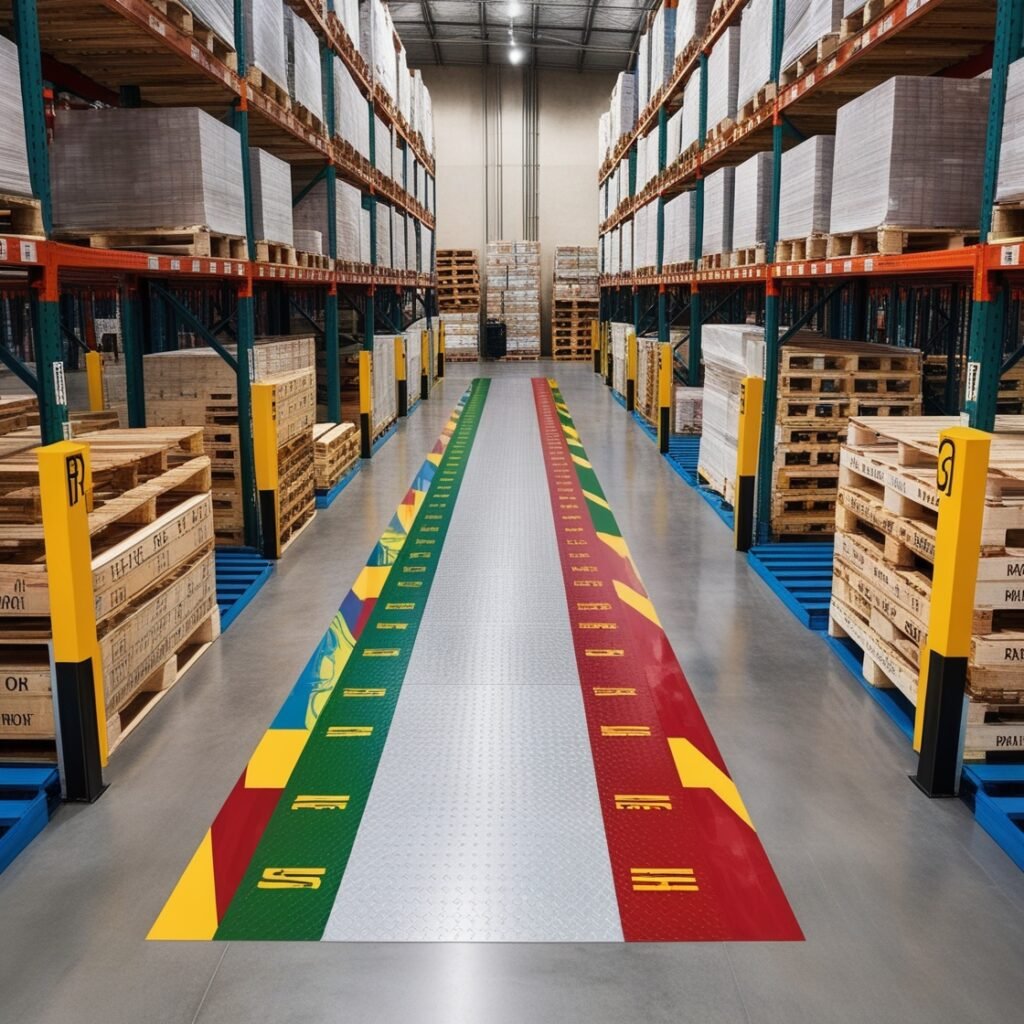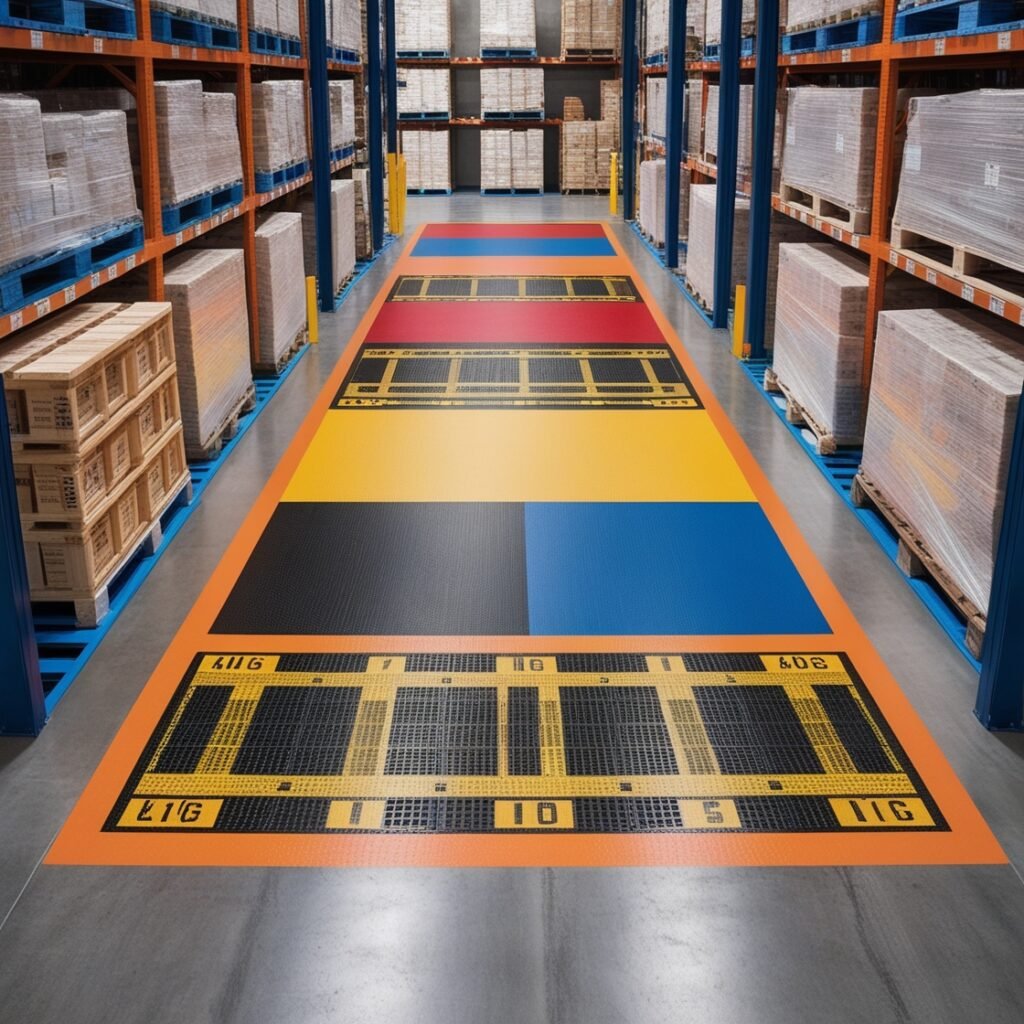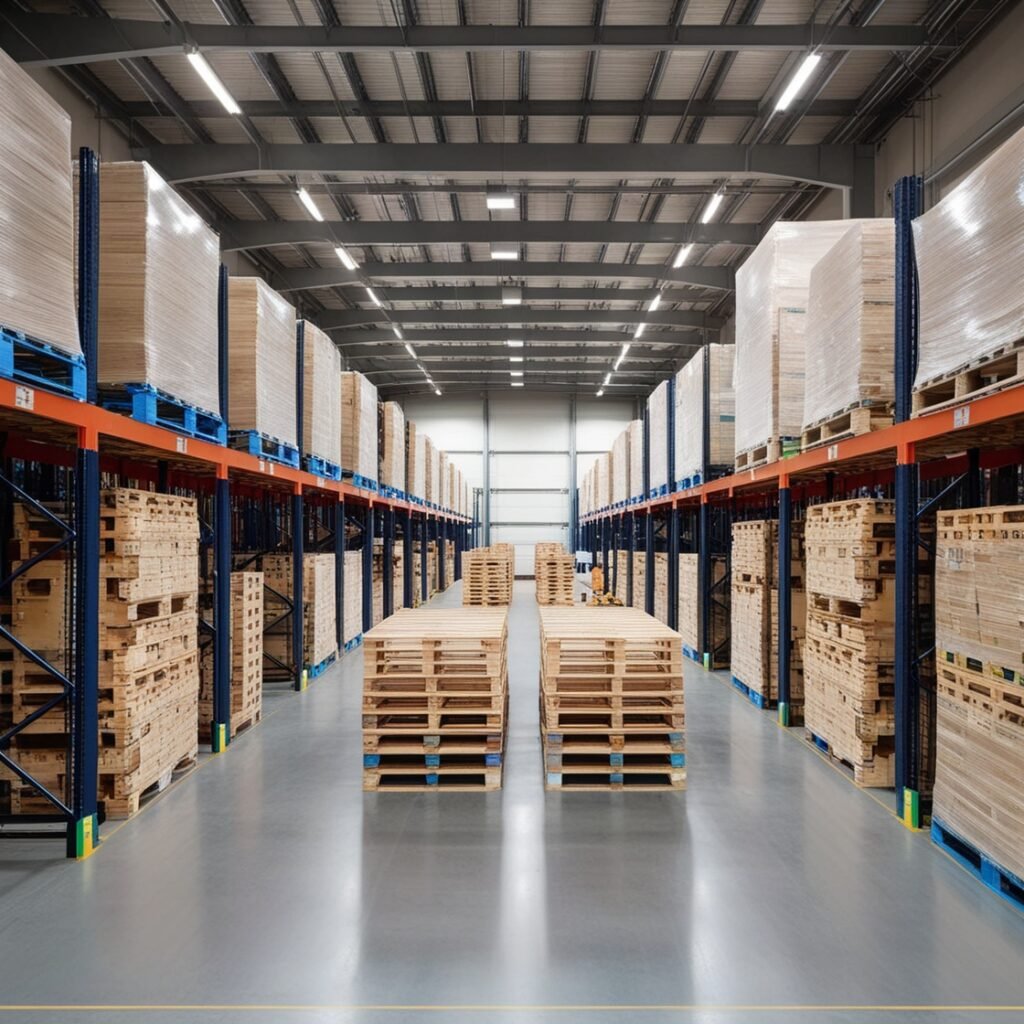Laying pallets is a fundamental feature to achieve Smart Storage. Well-organized warehousing is the foundation of modern supply chain management. In the dynamic logistics world, one feature often underestimated is the art of pallet stacking. When executed correctly, pallet stacking can have a significant impact on storage space optimization, improving safety and streamlining warehouse operations. This blog will highlight the techniques, strategies, and benefits of mastering pallet stacking for smart storage in warehouses.
- Importance of Laying Pallets and Stacking
- Techniques for mastering in laying pallets
- Benefits of Understanding Pallet Stacking
- Conclusion on laying pallets
- Frequently Asked Questions
- Why is it important to properly stack pallets in the warehouse?
- What are the common pallet layout configurations in the warehouse?
- How does pallet layout affect warehouse efficiency?
- What factors should be considered when designing a pallet layout?
- How can RFID or barcode technology be integrated into pallet management?
- What role do pallet condition and quality play in warehouse operations?
- How can a warehouse prevent pallet-related safety incidents?
- Can automated systems be used for pallet handling in warehouses?
- How can a warehouse adapt pallet layout to seasonal inventory changes?
- What best practices should be followed for pallet labeling?

Importance of Laying Pallets and Stacking
Warehouses are essential to countless businesses, serving as hubs of storage and distribution. Effective utilization of warehouse space is supreme in increasing overall productivity and profitability. Laying pallets is a fundamental feature to achieve this, which offers several important benefits:
Space Optimization through laying pallets:
Proper pallet stacking ensures that the available space within the warehouse is maximized, reducing the need for expansion or leasing of additional storage facilities.
Accessibility:
Well-organized pallets smooth easy access to specific items, speeding up the retrieval process and enabling faster order fulfillment, which is critical to meeting customer demands.
Safety:
Safe pallet laying reduces the risk of accidents in the warehouse. Stable pallets reduce the possibility of items falling and causing injury to workers or damaging merchandise.
Inventory management:
Structured palletizing practices lead to more accurate inventory management. When items are organized thoroughly, it becomes simpler to keep track of stock levels and locate products.
Cost Effectiveness:
Efficient palletizing leads to cost savings, as it reduces labor requirements, minimizes damage to products, and prevents the need for additional space or facilities.

Techniques for mastering in laying pallets
laying pallets Alignment:
Start by selecting an appropriate palette alignment. For similar products, placing them in a uniform direction on pallets simplifies handling and stacking.
Weight Distribution:
Distribute the weight evenly on each pallet. Heavier objects should be placed at the bottom to maintain stability, while lighter objects can be placed at the top.
Use the right pallet type:
Use pallets that fit the specific needs of your inventory. There are different types of pallets available, including block pallets, stringer pallets, and plastic pallets, each with unique characteristics.
Consider pallet racking:
Implement pallet racking systems such as selective, drive-in, or push-back racking to optimize vertical storage space and improve access to pallets.
Pallet Labelling:
Clearly label each pallet with information about its contents, including product description, weight, and handling instructions. Proper labeling ensures that warehouse employees can quickly identify and retrieve items.
Pallet Wrapping:
Protect pallets by wrapping them with stretch film or shrink wrap. It stabilizes the load and prevents damaging the objects from shifting during transportation or storage.
Stacking Height:
Note the recommended maximum stacking height for products on each pallet. Exceeding this limit may result in instability and damage.
Pallet Inspection:
Regularly inspect pallets for signs of damage or wear and replace any that are not in good condition. Damaged pallets can compromise the integrity of the entire stack.

Benefits of Understanding Pallet Stacking
Efficient pallet laying in warehouses provides several benefits.
Maximize storage space:
By effectively using vertical and horizontal space, businesses can reduce their storage footprint, potentially saving on facility costs.
Faster order fulfillment:
Properly placed pallets make it easier for workers to locate and retrieve items, leading to faster order fulfillment and improved customer satisfaction.
Cost Savings:
Lower labor costs and product damage contribute to overall cost savings. Fewer accidents and injuries can also reduce workers’ compensation expenses.
Improves safety:
Safe pallet laying reduces the risk of accidents and injuries in the workplace, creating a safer environment for workers and protecting inventory.
Advanced Inventory Control:
Organized pallets make it easy to track inventory levels and reduce discrepancies. This leads to better control over stock levels and helps prevent overstocking or stockouts.
Sustainable practices:
Efficient palletizing can also contribute to sustainability efforts by reducing the need for additional storage facilities and reducing waste.

Conclusion on laying pallets
Understanding pallet stacking techniques is a fundamental skill for warehouse managers and logistics professionals who want to optimize their storage space, increase operational productivity, and improve profits. Correct orientation, weight distribution, and proper use of pallets, along with other techniques, ensure that goods are stored in a safe, organized, and accessible manner.
In the competitive business landscape, the art of pallet stacking can be the differentiator that sets your warehouse apart from the rest. By adopting these technologies and focusing on smart storage, you can transform your warehouse into an efficient machine that supports your supply chain and ultimately your success.
Click here for more topics.
Frequently Asked Questions
Why is it important to properly stack pallets in the warehouse?
Properly laying pallets is important for several reasons:
Optimal space utilization: Efficient pallet layout maximizes warehouse space, allowing greater storage capacity.
Accessibility: Well-organized pallets make locating and accessing inventory easier, improving overall workflow.
Safety: Properly arranged pallets reduce the risk of accidents, such as pallets falling or objects falling during retrieval.
Inventory accuracy: Organized pallets contribute to accurate inventory management, reducing errors and minimizing shrinkage.
What are the common pallet layout configurations in the warehouse?
Common palette layout configurations include:
Block stacking: Pallets are stacked directly on top of each other to form solid blocks of inventory.
Selective racking: Pallets are stored on aisle racks for easy access.
Drive-in racking: Pallets are stored on rails within a rack system, allowing forklifts to drive into the rack structure.
Pushback racking: Pallets are loaded from one side, and subsequent pallets push the previous ones back. This allows high-density storage.
How does pallet layout affect warehouse efficiency?
Efficient pallet layout contributes to warehouse efficiency:
Reducing retrieval time: Well-organized pallets make it easy to locate and retrieve items quickly.
Minimizing handling time: Properly placed pallets facilitate the smooth movement of goods, reducing the time and effort required for handling.
Optimizing storage capacity: Strategic pallet layout maximizes the use of available storage space, increasing overall warehouse capacity.
What factors should be considered when designing a pallet layout?
Key factors to consider when designing a palette layout include:
Product characteristics: Consider the size, weight, and fragility of the products being stored.
Storage equipment: Choose appropriate storage equipment, such as racks or shelving, depending on the pallet layout.
Accessibility: Ensure easy access for forklifts or other handling equipment.
Inventory turnover: Consider the frequency of item retrieval and re-stocking.
Safety Regulations: Follow safety regulations and guidelines while designing the layout.
How can RFID or barcode technology be integrated into pallet management?
RFID (radio-frequency identification) or barcode technology can be integrated for efficient pallet management:
Tracking Inventory: Each pallet can be tagged with RFID tags or barcodes for accurate tracking.
Automating data entry: Scanning pallets with an RFID or barcode reader automates data entry, reducing manual errors.
Improved visibility: RFID technology allows real-time visibility into the location and condition of palletized inventory.
What role do pallet condition and quality play in warehouse operations?
The condition and quality of pallets are important for several reasons:
Safety: Damaged or weak pallets pose a safety risk and can lead to accidents.
Product Integrity: Quality pallets help maintain the integrity of the products stored on them.
Operational Efficiency: Well-maintained pallets contribute to smooth material handling operations.
Can automated systems be used for pallet handling in warehouses?
Yes, warehouses can employ automated systems, such as conveyor systems, robotic palletizers, and automated guided vehicles (AGVs) for efficient and streamlined pallet handling. These systems improve speed, and accuracy and reduce manual labor.
How can a warehouse adapt pallet layout to seasonal inventory changes?
Warehouses can adapt pallet layouts to seasonal changes:
Using adjustable storage systems to accommodate varying pallet sizes.
Implementing dynamic storage strategies to adapt to changing inventory demands.
Forecasting and planning for peak seasons to efficiently allocate storage space.
What best practices should be followed for pallet labeling?
Best practices for pallet labeling include:
Using clear and standardized labels.
Which includes essential information like product description, quantity, and expiry date.
Ensuring labels are securely attached to pallets.
Regularly updating labels to reflect inventory changes.
